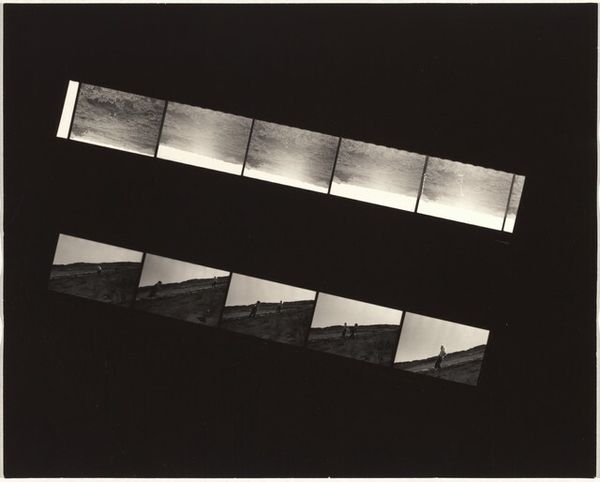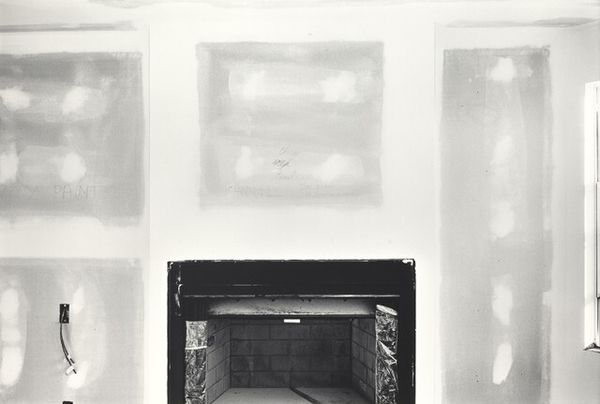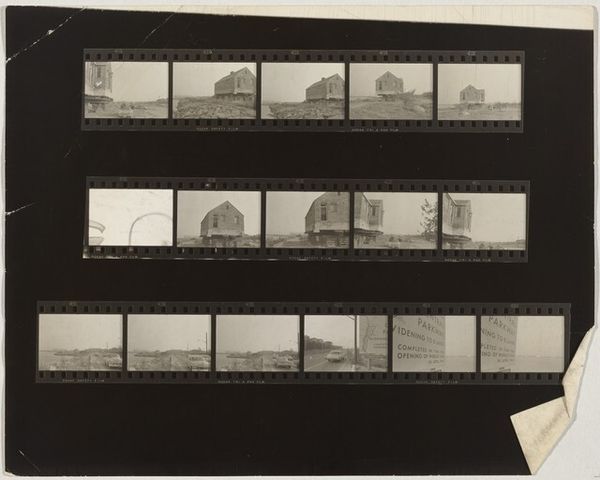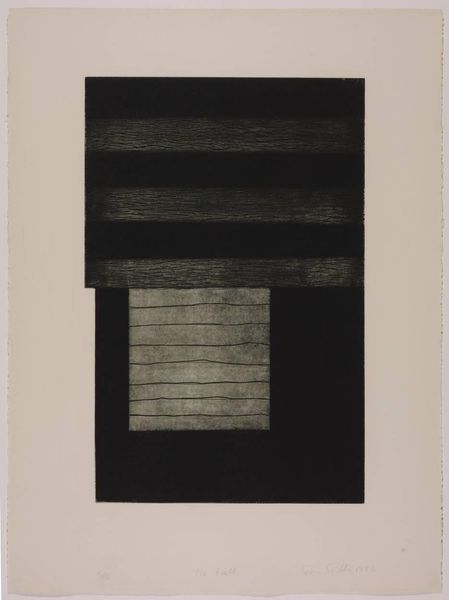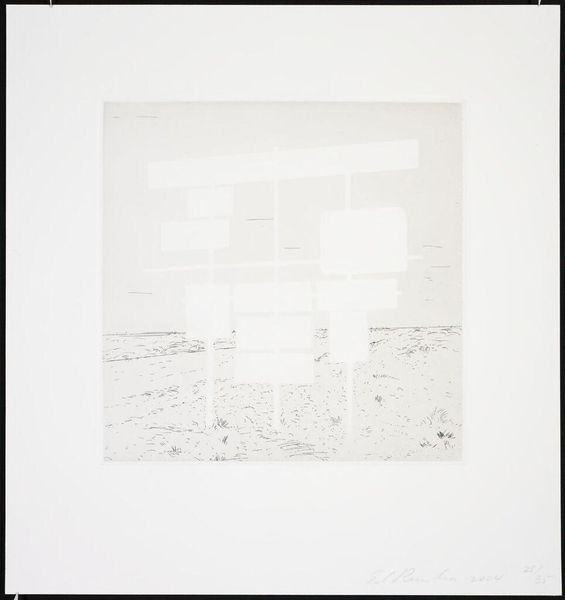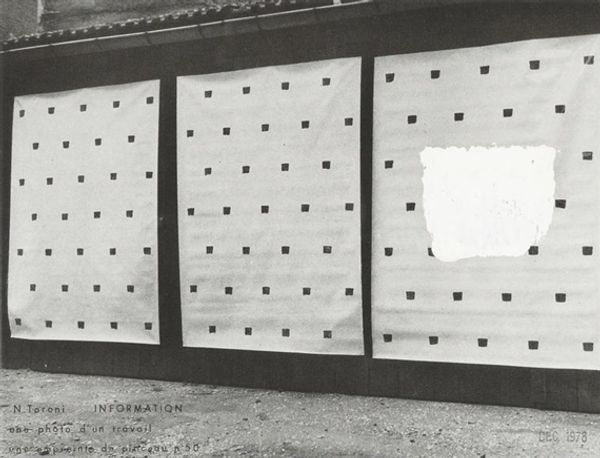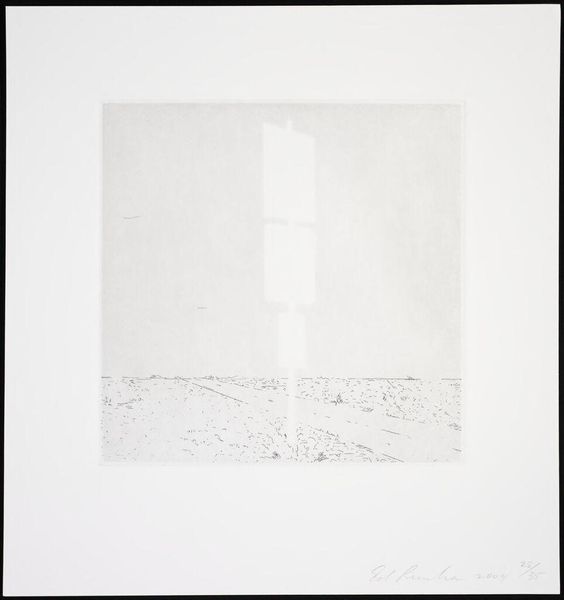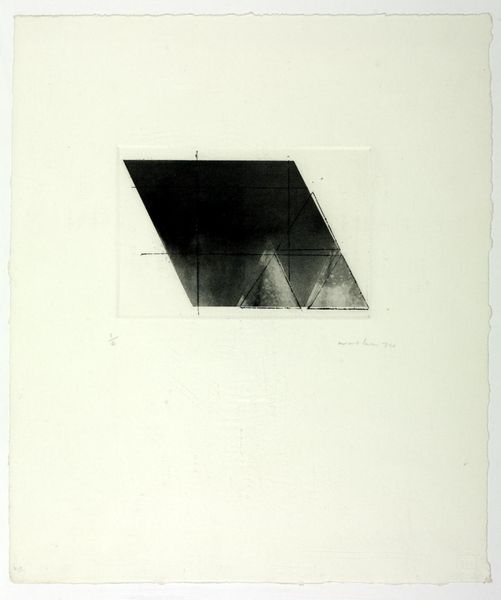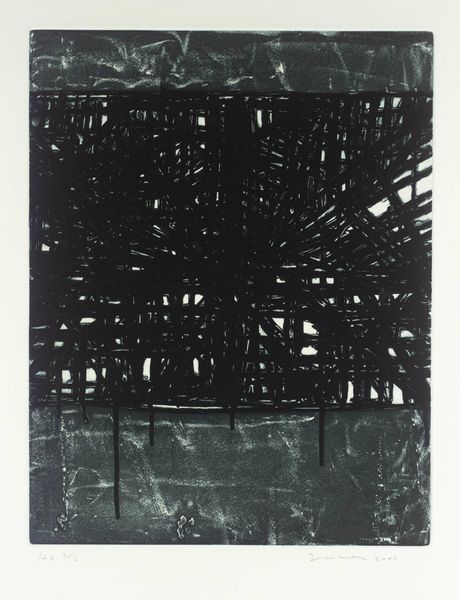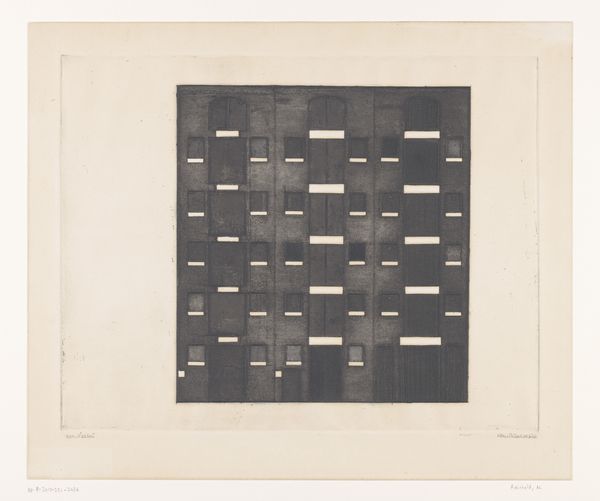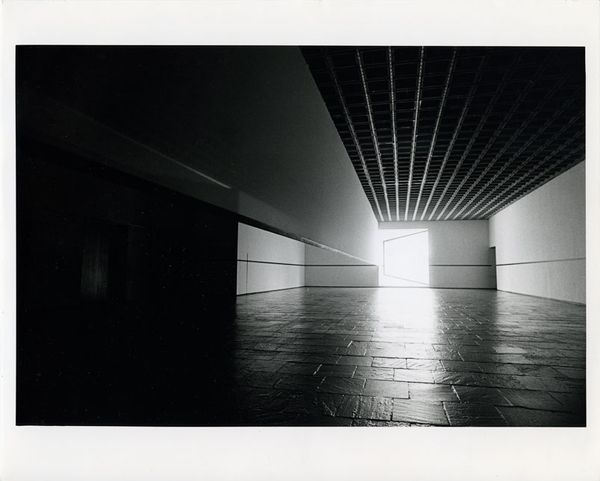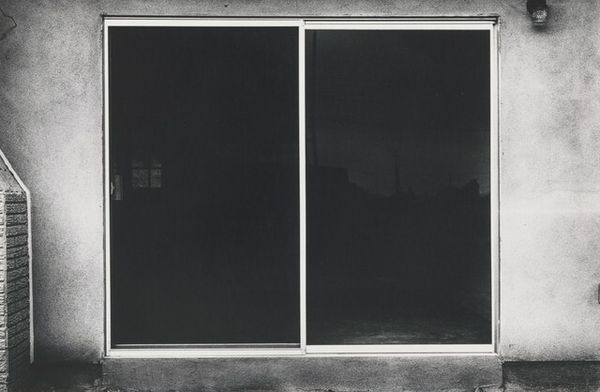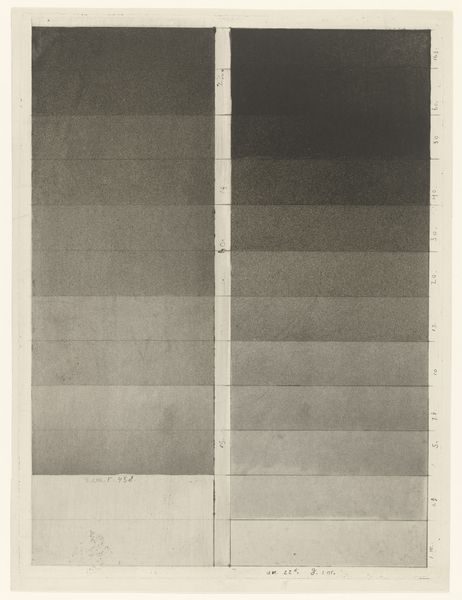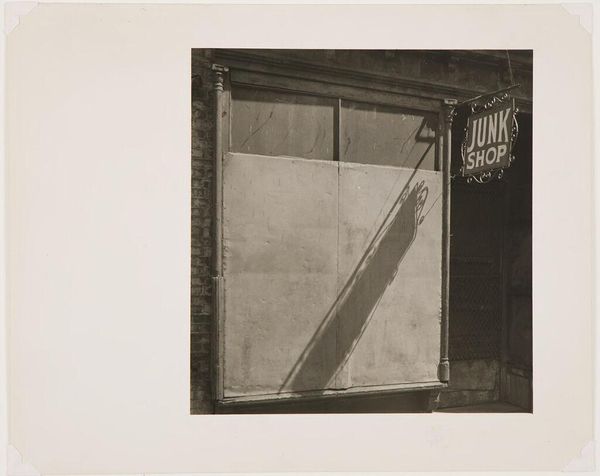
Dimensions: image: 560 x 790 mm
Copyright: © Rachel Whiteread | CC-BY-NC-ND 4.0 DEED, Photo: Tate
Editor: Here we have Rachel Whiteread's "Mausoleum Under Construction" from the Tate collection. It's a black and white photograph that feels both monumental and unsettling to me. What draws your eye when you look at it? Curator: Funny you say unsettling, it gives me the shivers too! I see this looming grid, promising eternal rest, yet the "under construction" part makes me ponder. Is it about the fragility of memory, or the endless cycle of life and death? Editor: That's a really beautiful way to put it. I hadn't thought about memory being fragile but it totally makes sense. Curator: Right? Maybe Whiteread is asking us, "what will be left when we are all gone?" Heavy stuff. Editor: Definitely a conversation starter, and something to reflect on. Curator: Indeed. Death and construction... Who knew they could be so thought provoking?
Comments
tate 7 months ago
⋮
http://www.tate.org.uk/art/artworks/whiteread-mausoleum-under-construction-p77934
Join the conversation
Join millions of artists and users on Artera today and experience the ultimate creative platform.
tate 7 months ago
⋮
London is a portfolio of eleven prints made by eleven artists based in London. It was commissioned by Charles Booth-Clibborn and published under his imprint, The Paragon Press, London. The images were printed and editioned at Coriander Studio, London. The portfolio was produced in an edition of sixty-five, the first forty of which are portfolio sets and the remainder are the artists' copies. A further fifteen sets were produced for artists and collaborators. Tate's copy is number five in the edition. The title and colophon pages were designed by Phil Baines using his own typeface. The portfolio is contained in a black buckram-covered wooden case bearing the title in yellow. London is the second group portfolio published by The Paragon Press since its inception in 1986. It was conceived as a portable group exhibition containing work by emerging artists of the same generation. There is no particular common theme. Factors linking some of them are studying art at Goldsmiths College, London in the late 80s (where they were taught by Conceptual artist Michael Craig-Martin, born 1941), working with Jay Jopling (who later opened White Cube Gallery in London) and being exhibited at the Saatchi and Karsten Schubert Galleries in London. Booth-Clibborn had already collected work by a number of the participating artists, few of whom had done any printmaking before embarking on the project. Most chose to work with screenprinting, with the exception of Langlands and Bell, whose image is embossed. Screenprinting is ideally suited to reproducing appropriated and photographic images. Its adoption reflects a characteristic use by young British artists (the group to which most of the London artists belong) of objects or images appropriated from everyday life. Individual prints vary in size, the type of paper used and the orientation of the image. Rachel Whiteread's image, Mausoleum Under Construction, is a four-colour screen-print in landscape orientation on 300gsm Somerset Satin paper. It is derived from a photograph by Camilo José Vergara published in a book on American cemeteries, Silent Cities (Princeton Architectural Press 1989), written by American urban historian Kenneth T. Jackson. The full title of Vergara's image is Mausoleum Under Construction, Queen of Heaven, Southern California. The mausoleum, a concrete grid of sinister dark spaces, fills most of the image. It is framed by a narrow strip of sky with advancing clouds above and bare earth below. Whiteread has commented: Architectural spaces have always intrigued me … I made a … print … based on an image of a mausoleum under construction. It was made up of poured concrete cubicles, which then had a marble façade clipped onto it after the bodies had been pushed in. But it was also like a block of flats, buildings that you constantly see being constructed, or demolished. It was also like a grid, or a minimalist work like a Judd.(Quoted in Rachel Whiteread, p.11.) Vergara's photograph appeared as a very small illustration in Silent Cities. When his original transparency was obtained and enlarged, a coke can in one of the sections was discovered to have been caught by the camera. This was edited out to render the image more pure and abstract, hence more closely related to Whiteread's sculptural practice of casting the negative spaces of furniture and buildings. This is Whiteread's first print. Further reading:Contemporary British Art in Print: The Publications of Charles Booth-Clibborn and his Imprint The Paragon Press 1986-95, exhibition catalogue, Scottish National Gallery of Modern Art, Edinburgh 1995, pp.19 and 46-51, reproduced (colour) p.51Jeremy Cooper, no FuN without U: the art of Factual Nonsense, London 2000, pp.39-41, reproduced (colour) p.41Rachel Whiteread, exhibition catalogue, Stedelijk Van Abbemuseum , Eindhoven 1992, p.11, reproduced p.11 Elizabeth ManchesterJune 2002
